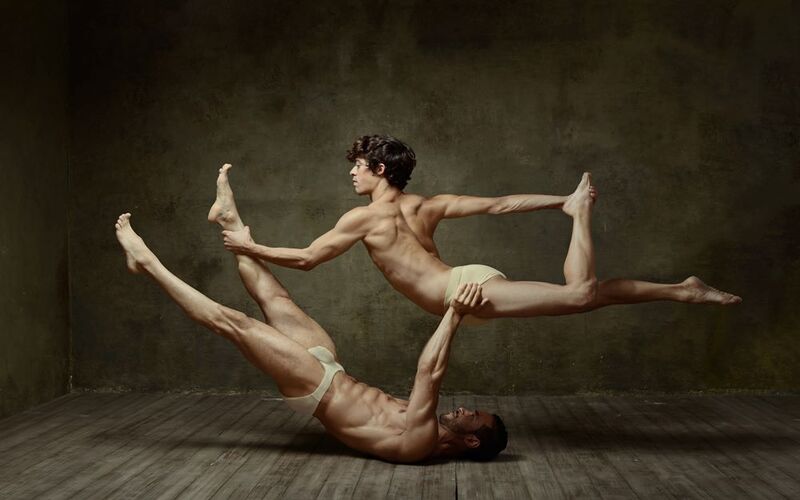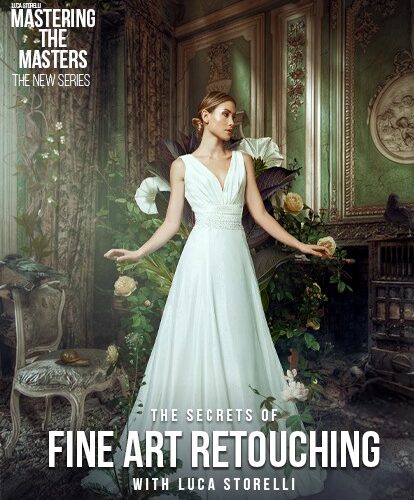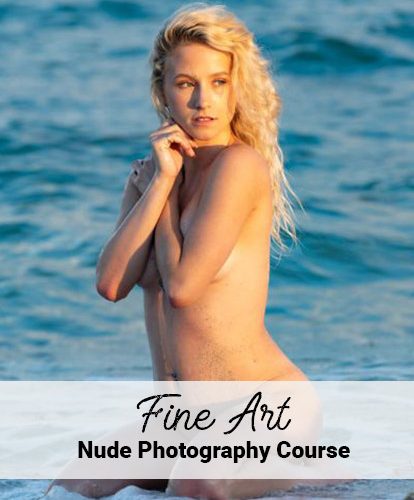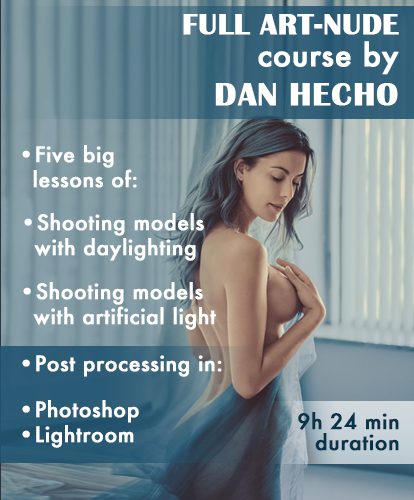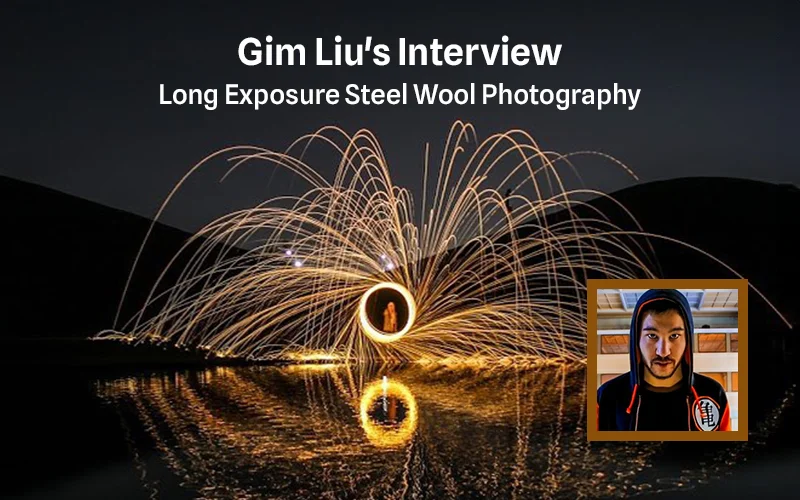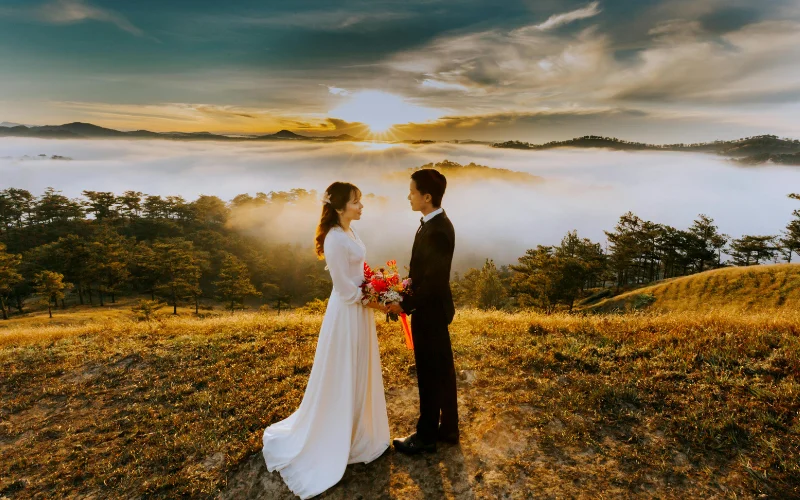Olivier Valsecchi is a fine art photographer in nude photography genre. He liked music as a teenager, but became passionate about photography when creating cover art for his record sleeves.
He spent ten years taking portraits before enrolling in ETPA photography school to perfect his technical skills.
His work focuses on the cycle of birth, death, and rebirth in nature and is often dark and mysterious. Instead of focusing on the physical body, Valsecchi sees it as an empty vessel to express his own emotions and create self-portraits that do not necessarily feature himself.
He works based on personal instinct, from visualizing an image to capturing the moment. With his striking black and white images, Valsecchi captures beauty and character in aspects of life that are often overlooked.

Q1. You first had an interest in musical creation, before moving to photography and self-portraits. What drew you to the art of nude photography, and how did you get started in the field?
A. At the very beginning when I was only a teenager I used to shoot everything : landscapes, people, objects, spiders, myself. But I do remember moving on to nude photography as a way to explore my own sexuality and improve my self-confidence. I think I might have used photography as therapy.
Q2. You are the creator of award-winning series like DUST, Time of War, Klecksography, etc. Can you describe your creative process when conceptualizing and executing any nude photography project?
A. Each series has its own story and genesis. Klecksography was driven by the Hasselblad Master Book. I started Drifting after my father was diagnosed with cancer. Dust, Time of War and Blackdust were processed over a long period of time, after a lot of research, whereas Equilibrium and Stark Naked were built on improvisation and my cultural knowledge about sculpture. I have a folder named "Projects", with at least 20 subfolders, each subfolder being an idea of a series, a theme, a script, images that were already made on that theme, drawings. All these ideas are waiting for me to be ready to work on them, having the right energy. Being ready to work on a series means you have everything at your disposal : the idea, the models, the crew, the location, the props, and it's a lot of work to bring all the ingredients together.

Check out some of our amazing nude photography deals:
- Masterclass: Creative Nude Photography On A Budget
- Masterclass: Make Your Own Style In Art Nude Photography
- Fine Art Nude Photography Course
Q3. What do you hope viewers take away from your nude photography, and how do you strive to create a meaningful and impactful experience for them?
A. I hope people say my work is different from nude photography and what they usually see, that it is something else. It is more about creative ideas and concepts that are meant to get to the core of emotions, than just looking at a naked body. So I guess I hope viewers take away a part of the emotion I want to give them, and try to make something out of it.
Q4. How has the art and industry of nude photography evolved over the course of your career, and how have you adapted to these changes?
A. I feel I am only adapting to my inner changes. You know, I’m not even sure I am aware of those changes you’re talking about. What changes ? I am focusing on my own story and the way I want to tell it, not what other people do or how nude photography is selling.
Q5. What techniques do you use to create a comfortable and collaborative atmosphere during a nude photo shoot?
A. It’s a virtuous circle. I think being comfortable with myself helps me being comfortable with others. If nudity makes you feel uncomfortable, there’s a good chance people feel it and be as awkward as you are. So it’s not a technique really, it’s just a state of mind, a way of being natural and confident. I usually behave as if models were wearing clothes.

Q6. Can you discuss a particularly memorable or challenging nude photography shoot that you have done in the past?
A. When you say challenging, I immediately think of Klecksography, although Blackdust was a piece of challenge in a very different way. But
Klecksography… My goodness I think it’s like a trauma or something. Shooting this series was so exhausting, with all these models to direct and the assistants to give orders to, who gave me the feeling they didn’t get what I was doing. I felt really lonely, like I was the only person knowing what I was doing and even then, there were doubts in my mind, but I had no choice but finishing
this series for the Hasselblad Masters Book. We would spend hours trying to make a human form that would look like a Rorschach test and sometimes we would get nothing out of the day. Models were freezing in the studio – it was an old shed impossible to heat. It was terrible.
Q7. How do you handle difficult or uncomfortable situations that may arise during a nude photo shoot, such as a model expressing discomfort or a wardrobe malfunction?
A. I do remember that one time when the model arrived in the studio, it was for a Blackdust photoshoot. I had explained to him how it would go, what we would do, that it was not Photoshop, he would jump in the dust for real, I even had showed him a photo or two with previous models. He was aware of everything. He undressed and I gathered black powder to shower him with. He looked me in the eyes and said : “what are you doing ? I’m allergic to dust”. I think I had a little heart attack or something… That’s the kind of thing you can’t do nothing about. “I said ok, get dressed it’s over.” So when you talk about discomfort, I say you can’t but go along with the level of discomfort the model expresses.

Q8. How do you choose your subjects, and what qualities do you look for in a model for a nude shoot?
A. Sometimes I meet people at a dinner party, or on social media. I meet people with a lot of charm but sometimes unfortunately it is not enough to be a model in the way I expect for my images. There is something very athletic and statuesque in my series, so the shape of the body usually matters. Also I need to sense that the models are going to facilitate the shooting by understanding the spirit of the work we are going to do together and what I want to express, because they need to incarnate an idea or an emotion very naturally. Some people are very inspiring being who they are, that’s why I work so much with contorsionists or dancers, because they already are in the field of creation.
Q9. How do you like to spend your free time?
A. I love traveling, reading about psychology, doing sports, pilates and tap dance. I do a lot of things actually. I never get bored.

Check out our blog articles for some nude photography inspiration:
- Exploring The World Of Nude Photography: Types & Tips
- 9 Creative Nude Couple Photoshoot Ideas for 2023
- The Beauty Of Simplicity: Why Black And White Nude Photography Is Timeless
Q10. Can you tell me what your plans are for the next six months?
A. This summer I’ll work on some more photos to make a Venus series, in addition to those I have shot a few years ago (Venus au bureau, Venus sketch #7) and already unveiled on Instagram. I will shoot some additional photos for my Stark Naked series to complete it with some new models. I also have a new project in mind, like a cheeky wink to contemporary art.
Q11. What advice do you have for aspiring nude photographers, particularly those who may be new to the field?
A. Be respectful with the models. I always highly recommend, especially if you're
a man, to let yourself be your first nude model. Because you have to
understand what models are living through in front of your eyes when they are
naked, the awkwardness, the anxiety. It will help you help them get rid of their
apprehension. And it's a good exercise anyway, you may even like it and feel
how empowering it is.

Olivier’s work as a fine art photographer is truly inspiring. His creative eye and unique perspective have resulted in successful and captivating projects that serve as examples for both aspiring and professional photographers. His talent serves as a reminder of the emotional and artistic potential of nude photography and what can be achieved with the right vision and creative approach.
Thank you, Olivier, for sharing your gifts with the world and for inspiring others to explore this powerful and expressive art form.
Don’t forget to check out more work by Olivier Valsecchi here!
